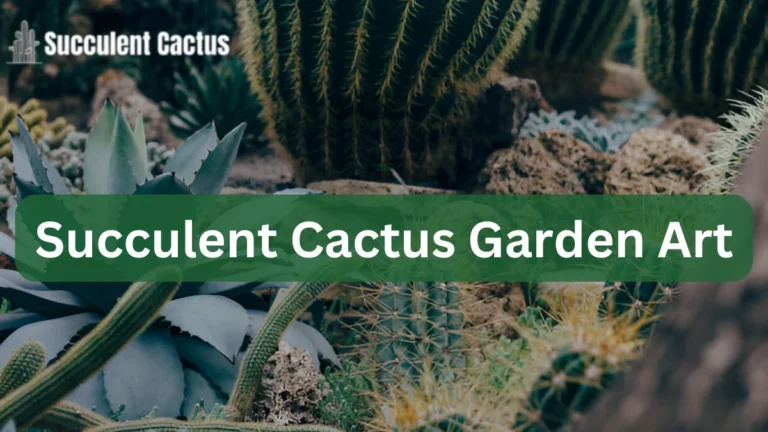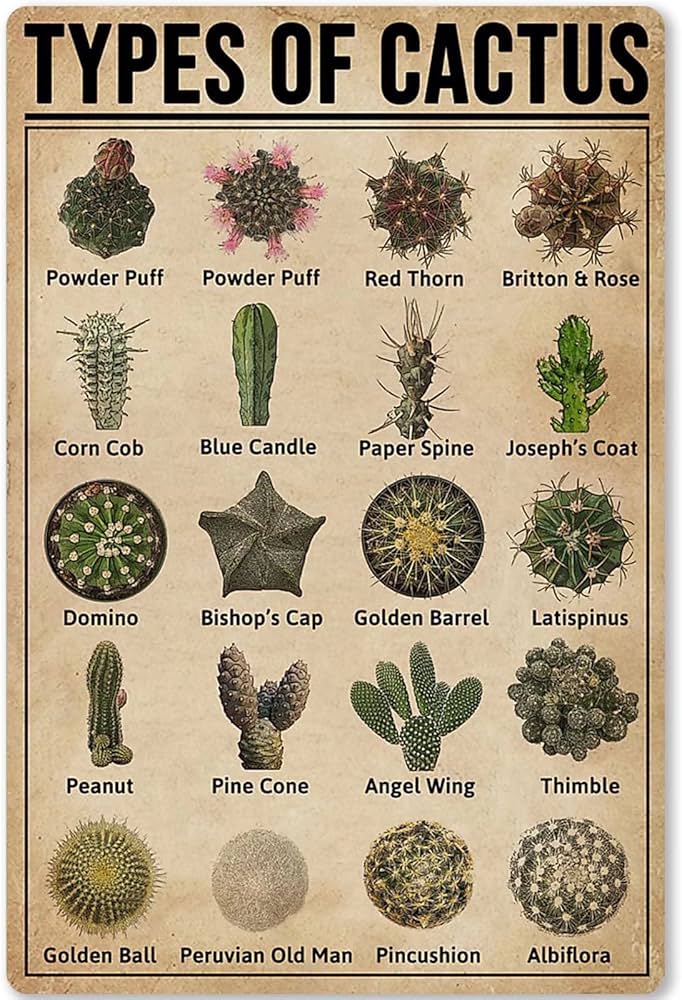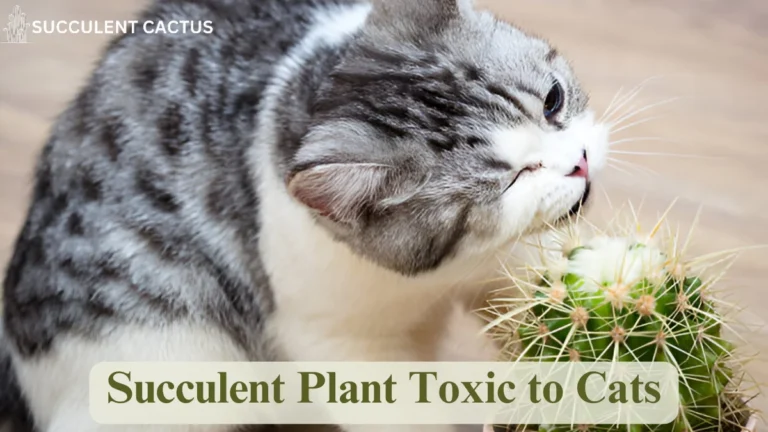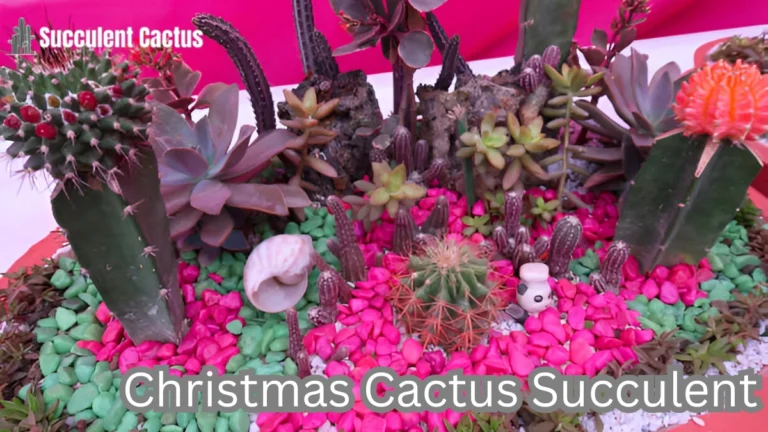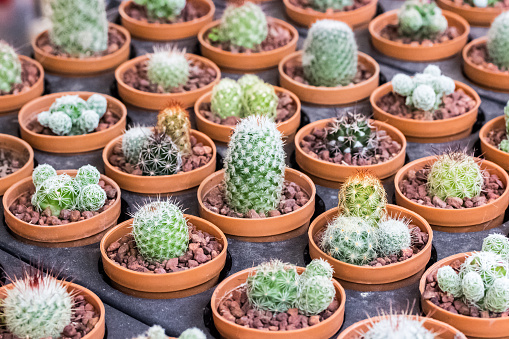Agave: The Succulent Plant Used to Make Tequila

Tequila, the world-famous Mexican spirit, owes its existence to a particular succulent plant—the Agave plant. Known for its spiky leaves and ability to thrive in arid conditions, Agave is more than just an ingredient in tequila. It holds deep cultural, economic, and ecological significance. Whether you’re solving a crossword puzzle looking for a “succulent plant used to make tequila (5 letters)”—AGAVE or simply want to learn more about this fascinating plant, this guide covers everything from its botanical properties to the tequila-making process and future sustainability efforts.
The Agave Plant: A Botanical Marvel 🌿
What is Agave?
Agave is a succulent plant from the Asparagaceae family, closely related to lilies. It stores water in its thick leaves, allowing it to survive harsh desert climates. The plant grows in a rosette pattern, with each leaf featuring sharp spines along its edges.
Different Types of Agave
Not all Agave species, a type of succulent plant, are used for tequila. Some are cultivated for mezcal, pulque, or even fiber production. Here are the most well-known types:
| Agave Type | Used For | Regions Grown |
| Agave tequilana (Blue Agave) | Tequila | Jalisco, Mexico |
| Agave angustifolia | Mezcal | Oaxaca, Mexico |
| Agave americana | Pulque, ornamental use | Central Mexico |
| Agave salmiana | Pulque | Various regions |
What Makes Agave a Succulent?
Agave is classified as a succulent because:
✔️ It stores water in its leaves to survive drought.
✔️ It has thick, fleshy leaves that reduce water loss.
✔️ It thrives in low-water environments with minimal care.
The Tequila-Agave Connection 🍹
Why Only Blue Agave for Tequila?
Tequila can only be made from Blue Agave (Agave tequilana Weber var. azul) due to:
- Its high sugar content, essential for fermentation.
- Its mild flavor, making tequila smoother than other Agave-based spirits.
- Legal regulations, which state that only Blue Agave can be used for authentic tequila production.
How Long Does It Take to Grow Agave?
Growing Agave for tequila isn’t a quick process. It takes 6-10 years before it can be harvested!
| Growth Stage | Time Required | Description |
| Seedling Phase | 1-2 years | Small shoots emerge from the mother plant. |
| Mature Growth | 3-5 years | Leaves expand, and sugar levels increase. |
| Ready for Harvest | 6-10 years | Piña (core) reaches full sugar content. |
Farmers must carefully time the harvest—if the plant flowers before harvesting, the sugars will be lost!
The Tequila Production Process 🍾
Step 1: Harvesting the Piñas
- Agave farmers, known as “Jimadores,” cut away the spiky leaves, revealing the piña—a pineapple-shaped core that contains fermentable sugars.
- A single piña can weigh 40–110 pounds!
Step 2: Cooking & Juice Extraction
- Piñas are roasted in ovens to break down starches into sugars.
- The cooked Agave is crushed to extract aguamiel (sweet Agave juice).
Step 3: Fermentation & Distillation
- The juice is fermented for 4-7 days, turning sugars into alcohol.
- The fermented liquid is distilled twice to remove impurities.
Step 4: Aging Process
There are four main types of tequila based on aging:
| Type of Tequila | Aging Time | Color & Flavor |
| Blanco (Silver) | Unaged or <2 months | Clear, fresh Agave taste |
| Reposado | 2-12 months in oak | Light golden, smooth |
| Añejo | 1-3 years in barrels | Deep amber, rich |
| Extra Añejo | 3+ years in barrels | Dark, complex, luxurious |
Tequila vs. Mezcal: Key Differences 🔥
The Agave Used
- Tequila: Only made from Blue Agave.
- Mezcal: Can be made from 30+ Agave species.
Cooking Method
| Feature | Tequila | Mezcal |
| Cooking Process | Cooked in industrial ovens | Roasted in underground pits |
| Distillation | Copper or stainless steel stills | Often distilled in clay pots |
| Flavor | Smooth, sweet, mild | Smoky, earthy, complex |
Which One to Choose?
✔️ Prefer a smooth, easy-drinking spirit? Choose tequila.
✔️ Love bold, smoky flavors? Go for mezcal!
Sustainability Challenges in Agave Farming 🌎
The Problem of Monoculture
- Over 300 million Agave plants are cultivated for tequila each year.
- A lack of genetic diversity makes them susceptible to pests & diseases.
Sustainable Farming Solutions
✔️ Crop rotation to prevent soil depletion.
✔️ Organic fertilizers to maintain soil health.
✔️ Replanting wild Agave to preserve biodiversity.
Future of Eco-Friendly Tequila
Brands like Patrón, Don Julio, and Casa Noble are leading efforts in sustainable farming, using:
✔️ AI-powered monitoring to track plant health.
✔️ Recycling Agave waste for eco-friendly byproducts.
Agave-Based Cocktails & Recipes 🍸
Tequila is one of the most versatile spirits in the world, used in everything from classic cocktails to modern craft creations. Beyond alcoholic drinks, Agave is also an essential ingredient in non-alcoholic beverages and culinary recipes.
Classic Tequila Cocktails
Tequila is the star ingredient in some of the most popular cocktails worldwide. Each cocktail highlights a different aspect of Agave’s natural flavors—citrusy, sweet, or smoky.
Margarita: The Quintessential Tequila Drink
One of the most famous tequila-based cocktails, the Margarita, is a refreshing blend of tequila, lime juice, and orange liqueur (like triple sec or Cointreau).
Traditional Margarita Recipe:
- 2 oz tequila
- 1 oz lime juice (freshly squeezed)
- 1 oz triple sec
- Salt for rimming the glass
- Ice
Steps:
- Rim the glass with salt by rubbing a lime wedge around the rim and dipping it into coarse salt.
- In a cocktail shaker, combine tequila, lime juice, and triple sec with ice.
- Shake well and strain into the prepared glass.
- Garnish with a lime wheel.
For a modern twist, try flavored Margaritas with mango, strawberry, or jalapeño.
Paloma: A Refreshing Alternative
The Paloma is a lesser-known but equally delicious tequila cocktail, offering a grapefruit-forward flavor with a balance of tartness and sweetness.
Paloma Recipe:
- 2 oz tequila
- ½ oz lime juice
- Grapefruit soda (like Jarritos or Squirt)
- Salt for rimming the glass
- Ice
This cocktail is incredibly refreshing and low in sugar, making it a healthier alternative to sugary mixed drinks.
Tequila Sunrise: The Vibrant Layered Cocktail
The Tequila Sunrise is known for its beautiful layers, mimicking a sunrise.
Ingredients:
- 2 oz tequila
- 4 oz orange juice
- ½ oz grenadine
- Orange slice and cherry for garnish
By pouring grenadine last, it settles at the bottom, creating the signature gradient effect.
Non-Alcoholic Agave Drinks
Not a fan of alcohol? No problem! Agave syrup is a natural sweetener perfect for creating refreshing non-alcoholic beverages.
Agave Lemonade: A Naturally Sweet Twist
Instead of refined sugar, this lemonade is sweetened with Agave syrup, which provides a smoother, low-glycemic sweetness.
Ingredients:
- 4 cups water
- ½ cup fresh lemon juice
- ¼ cup Agave syrup
- Ice and lemon slices for garnish
Hibiscus Agave Iced Tea
Agave pairs beautifully with hibiscus tea, known for its tart, floral notes and health benefits.
Ingredients:
- 4 cups brewed hibiscus tea (chilled)
- 2 tbsp Agave syrup
- Ice and mint for garnish
This drink is high in antioxidants and makes for a refreshing summer beverage.
Virgin Paloma: A Tequila-Free Delight
Want to enjoy a Paloma without alcohol? Simply replace tequila with sparkling water or grapefruit juice for a light and fizzy alternative.
Culinary Uses of Agave in Cooking
Agave isn’t just for drinks—it’s a versatile ingredient in cooking.
Agave in Baking
- Agave syrup is a great substitute for sugar in cookies, cakes, and muffins.
- It keeps baked goods moist while adding a mild caramel flavor.
Agave in Marinades & Sauces
- Agave’s natural sweetness enhances marinades for meats, making them tender and flavorful.
- Try an Agave-lime glaze for grilled chicken or seafood.
Agave in Dressings & Salads
- A drizzle of Agave syrup in vinaigrettes adds a touch of sweetness to balance acidity.
The Future of Agave & Tequila 🌟
Agave farming is facing challenges, but new innovations are shaping its future.
The Growth of the Premium Tequila Market
The demand for high-quality, aged tequilas is at an all-time high. Consumers are shifting from cheap mixto tequila to 100% Agave-based spirits.
Why Are Premium Tequilas More Popular?
✔️ Smoother taste due to longer aging in oak barrels.
✔️ Handcrafted production methods using traditional clay ovens.
✔️ Luxury branding, attracting collectors and connoisseurs.
Brands like Clase Azul, Don Julio 1942, and Patrón Extra Añejo are leading this movement.
Innovations in Sustainable Agave Farming
With growing concerns over deforestation and soil depletion, tequila producers are investing in eco-friendly farming techniques.
Sustainable Practices Include:
✔️ Crop rotation to prevent soil degradation.
✔️ Agave waste recycling to create biofuel and fertilizers.
✔️ Using solar energy in tequila distilleries.
Agave-Based Products Beyond Tequila
The Agave plant is now being used in industries beyond tequila, including:
✔️ Agave fiber for biodegradable plastics and textiles.
✔️ Agave-based skincare with hydrating properties.
✔️ Agave honey as an alternative to traditional sweeteners.
Agave in Health & Nutrition 🏋️♂️
Agave is more than just a tequila ingredient—it has numerous health benefits that make it valuable in modern nutrition. The plant contains unique compounds like fructans, saponins, and inulin, which contribute to digestive health, hydration, and more.
Nutritional Benefits of Agave
Many people are turning to Agave-based products as healthier alternatives to refined sugar and artificial sweeteners. Agave syrup, for instance, has a lower glycemic index (GI) than sugar, meaning it doesn’t cause blood sugar spikes as dramatically.
Agave Syrup vs. Other Sweeteners
| Sweetener | Glycemic Index (GI) | Calories (per tbsp) | Key Benefit |
| Agave Syrup | 15-30 | 60 | Low GI, prevents blood sugar spikes |
| White Sugar | 65-70 | 49 | High GI, leads to energy crashes |
| Honey | 55 | 64 | Contains antioxidants, but higher GI |
| Maple Syrup | 54 | 52 | Natural alternative, but less sweet |
Health Benefits of Agave Syrup:
✔️ Low Glycemic Index – Safer for diabetics compared to regular sugar.
✔️ Sweeter than Sugar – You need less Agave syrup to achieve the same sweetness, reducing calorie intake.
✔️ Contains Inulin – Supports gut health by promoting good bacteria.
However, Agave syrup is high in fructose, so excessive consumption can affect liver function—moderation is key!
Agave & Gut Health
The fructans and inulin in Agave act as prebiotics, feeding beneficial gut bacteria like Bifidobacteria and Lactobacilli. A healthy gut microbiome is linked to better digestion, improved immunity, and even mood regulation.
How Agave Supports Gut Health:
- Encourages beneficial bacteria growth to aid digestion.
- Helps prevent constipation by improving stool consistency.
- Enhances mineral absorption, particularly calcium and magnesium.
💡 Tip: To maximize Agave’s gut health benefits, pair it with probiotic foods like yogurt, kefir, or kimchi!
Agave for Hydration & Skincare
Agave isn’t just consumed—it’s also used in skincare and hydration products due to its moisturizing and healing properties.
How Agave Benefits Skin:
✔️ Deeply Hydrates – Locks in moisture, keeping skin soft.
✔️ Soothes Irritation – Its natural anti-inflammatory compounds help with burns and rashes.
✔️ Rich in Saponins – These plant-based compounds have antimicrobial properties, helping fight acne.
💡 DIY Agave Face Mask for Hydration:
Mix 1 tbsp Agave syrup, ½ tbsp yogurt, and a few drops of lemon juice. Apply to your face, leave for 15 minutes, and rinse for glowing skin!
Agave in Culture & Traditions 🎭
Agave has deep roots in Mexican culture, playing a central role in ancient rituals, celebrations, and folklore. From the Aztecs and Mayans to modern tequila distilleries, Agave remains a symbol of endurance and tradition.
Agave in Ancient Mesoamerican Culture
Long before tequila, indigenous peoples in Mexico were using Agave for food, medicine, fiber, and spiritual ceremonies.
Agave in Aztec and Mayan Mythology:
- The Aztecs believed Agave was a gift from the gods, especially from the goddess Mayahuel, who represented fertility and nourishment.
- The fermented drink Pulque—made from Agave sap—was used in religious rituals.
✔️ Priests and nobles considered pulque sacred and consumed it exclusively.
✔️ People wove agave leaves into clothing, ropes, and mats.
✔️ People used the plant’s sap to treat wounds and infections.
Agave in Modern Mexican Celebrations
Today, Agave is at the heart of Mexican festivals and celebrations, especially those centered around tequila and mezcal.
🎉 Key Events Where Agave Plays a Role:
- Día de los Muertos (Day of the Dead): Families offer tequila as an offering to honor deceased loved ones.
- National Tequila Day (July 24): A celebration of Mexico’s most famous export!
- Independence Day (September 16): Tequila is the drink of choice during national festivities.
Agave in Art & Symbolism
Agave is a popular subject in Mexican art, tattoos, and folklore.
✔️ Agave tattoos symbolize strength, survival, and Mexican heritage.
✔️ Artists like Diego Rivera depicted Agave fields in their paintings, showcasing its cultural importance.
✔️ Mezcal bottles often feature Agave-inspired designs, celebrating craftsmanship and tradition.
Common Myths About Agave & Tequila 🧐
There are many misconceptions about Agave, a succulent plant, and tequila, some of which have led to misinformation about its health effects, production, and consumption.
Myth: “All Tequila Causes Hangovers”
One of the biggest myths about tequila is that it always results in a terrible hangover. However, the reality is that cheap, low-quality tequila (mixto) is usually to blame.
The Truth About Tequila & Hangovers
✔️ 100% Agave tequilas contain fewer additives and chemicals, leading to a cleaner drinking experience.
✔️ Cheap tequilas contain sugar-based alcohols, which dehydrate the body faster.
✔️ Drinking tequila with sugary mixers (like soda) increases the likelihood of a hangover.
💡 Tip: To avoid hangovers, drink 100% Agave tequila, stay hydrated, and limit sugary mixers.
Myth: “Agave Is a Type of Cactus”
Many people assume that Agave is a cactus because of its spiky appearance, but it actually belongs to the Asparagaceae family, making it a close relative of asparagus and yucca.
✔️ Agave has no spines like cacti.
✔️ It reproduces through rhizomes, not seeds.
✔️ The fibrous leaves store water differently than cacti.
Myth: “Tequila Should Always Be Taken as a Shot”
In many parts of the world, tequila is consumed as shots with salt and lime, but in Mexico, premium tequilas are meant to be sipped.
✔️ Añejo and Extra Añejo tequilas should be sipped like whiskey or cognac.
✔️ High-end tequila brands invest in oak barrel aging for smoother, richer flavors.
✔️ The proper way to enjoy tequila is in a tulip-shaped glass to appreciate its aromas.
FAQs (Frequently Asked Questions)
1. What is the succulent plant used to make tequila?
👉 Blue Agave (Agave tequilana Weber var. azul).
2. What is a 5-letter word for the plant used in tequila?
👉 AGAVE, a succulent plant commonly linked to tequila, is a frequent crossword clue.
3. Is Agave a cactus?
👉 No, Agave is a succulent plant used to make tequila, but it belongs to the Asparagaceae family, not the cactus family.
4. Can I grow Agave at home?
👉 Yes! Agave can be grown in well-draining soil with full sun—but it takes years to mature.
5. What are some good tequila alternatives?
👉 Mezcal is the closest alternative. For non-alcoholic drinks, try Agave syrup-based beverages.
Conclusion 🌵🍹
The Agave plant isn’t just a succulent—it’s the backbone of the tequila industry, a key part of Mexican culture, and a sustainable resource. Whether you’re a tequila enthusiast, crossword solver, or plant lover, Agave remains one of nature’s most fascinating gifts.

